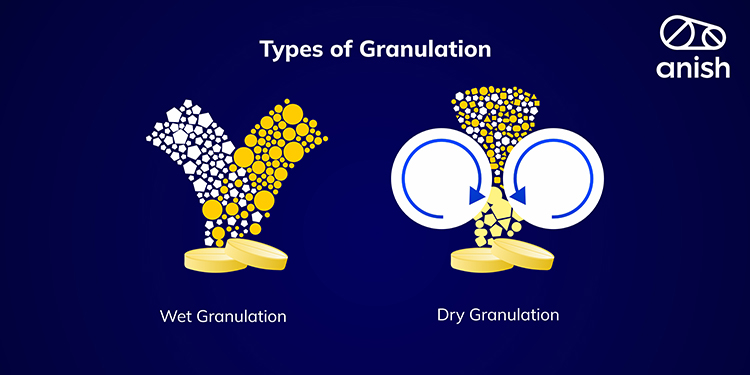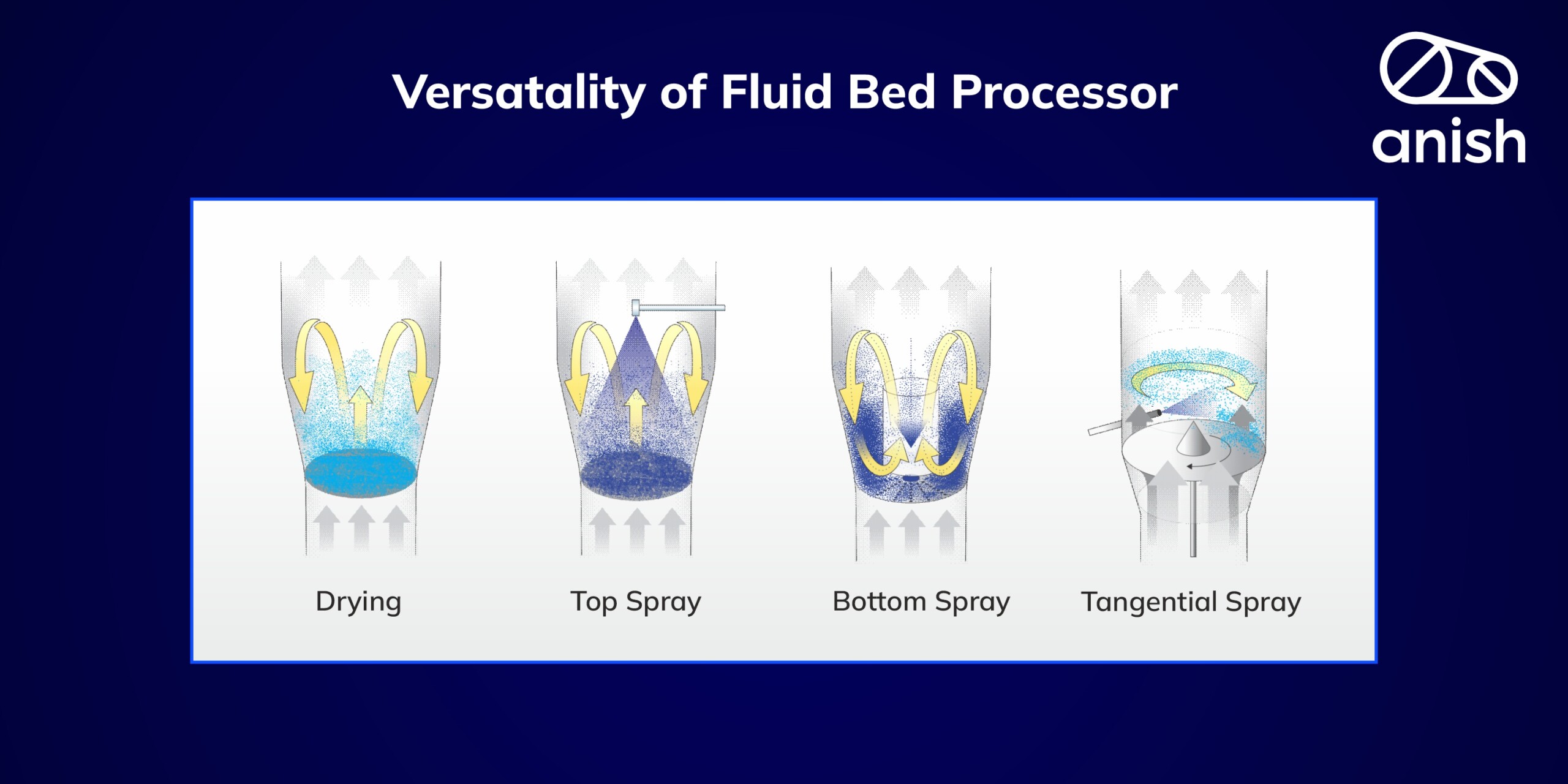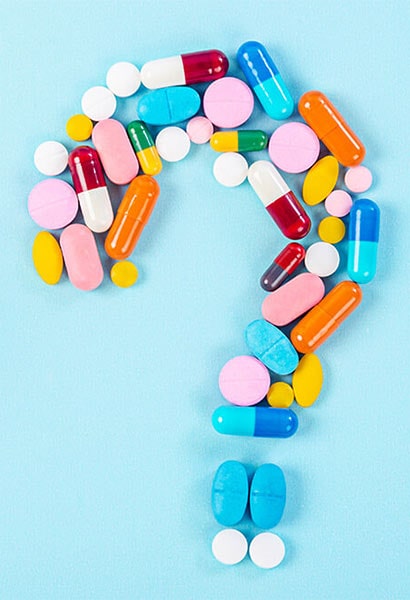In the realm of pharmaceutical manufacturing, precision and efficiency are paramount. anish pharma, a leading player in the pharmaceutical industry, understands the importance of selecting the right equipment and techniques to meet these stringent standards. In this discussion, we highlight the crucial role of granulation methods and the significance of choosing the right technology in pharma equipment manufacturing.
Granulation Methods in Pharma Manufacturing
Granulation is a fundamental process in pharmaceutical manufacturing, and it comes in two main categories: Wet Granulation and Dry Granulation. Each of these methods has its own unique advantages and challenges, selecting the right one is paramount to ensuring product quality.
Wet Granulation:
Wet granulation is a method that involves the addition of a liquid binding phase to a powder bed. This process allows for the uniform distribution of Active Pharmaceutical Ingredients (API), resulting in better content uniformity, improved flowability, and minimised tableting deficiencies. It is highly effective in enhancing the dissolution rate of poorly soluble drugs. However, wet granulation can be complex, time-consuming, and requires specific equipment. It may not be suitable for hydro-sensitive and thermolabile APIs.
At anish, we have made a deliberate choice to optimise wet granulation using state-of-the-art granulator machines, manufactured by industry leaders in India. This approach ensures that we consistently produce the highest quality granules, meeting the stringent standards of the pharmaceutical industry.
Advantages of Wet Granulation:
1. Uniform distribution of Active Pharmaceutical Ingredients (API): This results in better content uniformity of potent drugs.
2. Improved flowability of the powder: Enhances the handling and processing of the granulated material.
3. Minimises tableting deficiencies: Addresses issues such as capping, weight variation, and segregation of components in a homogeneous blend.
4. Improves compressibility of powder: Enhances the ability of the granulated material to form cohesive and well-compacted tablets.
5. Limits dust formation: Reduces the risk of airborne particles, contributing to a cleaner manufacturing environment.
6. May improve the dissolution rate of poorly soluble drugs: Imparts hydrophilic properties to the surface of granules, aiding in drug absorption.
Disadvantages of Wet Granulation:
1. Complex process: Especially challenging in the absence of the right equipment.
2. Comparatively more expensive: Takes into account the time, labour, utilities, and equipment required for the process.
3. Large area required: Both for the granulation and drying processes.
4. More process time: Takes longer compared to the dry granulation process.
5. Not suitable for hydro-sensitive and thermolabile API: Limiting its application for certain types of pharmaceutical ingredients.
6. Production of less compressible granules: Especially when compared to the low shear granulation process.
Wet granulation processes can further be classified into two subtypes based on the shearing strength they generate on the powder bed: High Shear Granulation and Low Shear Granulation.
High Shear Granulation:
Within the domain of wet granulation, there are two subtypes: high shear granulation and low shear granulation. High shear granulators are known for their rapid mixing and agglomeration capabilities, facilitated by an impeller and a chopper. These granulators create dense, less porous granules, ensuring consistent product quality. The robustness of this technology allows it to excel across a variety of products.
Here at anish pharma, we rely on high shear granulators, including top-driven impellers and chopper mixers, to ensure the highest quality granules with precise characteristics.
Low Shear Granulation:
In contrast to high shear granulation, low shear granulation operates at a slower pace, producing fluffy and porous granules with improved compressibility. These granulators offer flexibility in terms of energy input, droplet size, and agitating bar designs, making them suitable for various formulations.
anish pharma utilises low shear granulators like twin-shell mixers with agitator bars and ribbon blenders to cater to specific granulation needs with utmost precision.
Dry Granulation:
Dry granulation is a cost-effective method that doesn’t involve the use of liquid binders or heat for drying. It is faster than wet granulation, ideal for hydro-sensitive and thermolabile APIs, and requires less space. Dry granulation is the preferred choice when direct compression is not applicable. However, it necessitates specialised heavy-duty tablet presses and may not provide uniform colour distribution in the final product. Dust generation during the process is also a consideration compared to wet granulation.
Advantages of Dry Granulation:
1. Cost-Efficiency: Dry granulation is a cost-effective choice for pharmaceutical manufacturers, optimising resources.
2. Time-Saving: This method is faster than wet granulation, reducing production time and increasing efficiency.
3. Suitable for Sensitive APIs: Dry granulation is ideal for hydro-sensitive and thermolabile APIs, ensuring the integrity of active ingredients.
4. Compatibility with Hydrophobic Substances: It’s an effective method for handling hydrophobic and oily substances in pharmaceutical formulations.
5. Space-Efficient: Dry granulation equipment requires less space in the manufacturing facility, optimising floor space.
6. Alternative to Direct Compression: When direct compression is not feasible, dry granulation provides an effective alternative.
Disadvantages of Dry Granulation:
1. Specialised Equipment: It requires specialised heavy-duty tablet presses, which may entail additional investment.
2. Uniform Colour Distribution: Dry granulation may not provide uniform colour distribution in the final product, which can be a concern for certain pharmaceutical formulations.
3. Dust Generation: In comparison to wet granulation, dry granulation tends to create more dust during the manufacturing process.
Selecting the appropriate granulation technique is of paramount importance for us at anish pharma. We understand that both wet and dry granulation methods have their unique advantages and disadvantages, and the choice depends on the specific requirements of the products.
We take pride in being a renowned granulator machine manufacturer in India and pharma equipment manufacturer in Maharashtra. Our commitment to quality drives us to ensure that the granulation equipment used in our facilities meets the highest industry standards. By utilising the right granulation techniques and equipment, anish pharma maintains its unwavering commitment to delivering top-quality pharmaceutical products.
In conclusion, the choice of granulation method is a critical decision that pharmaceutical manufacturers must make to ensure the quality and efficacy of their products. For further information on our commitment to quality and innovation in pharmaceutical manufacturing, please feel free to reach out to us.
 Search
Search 




